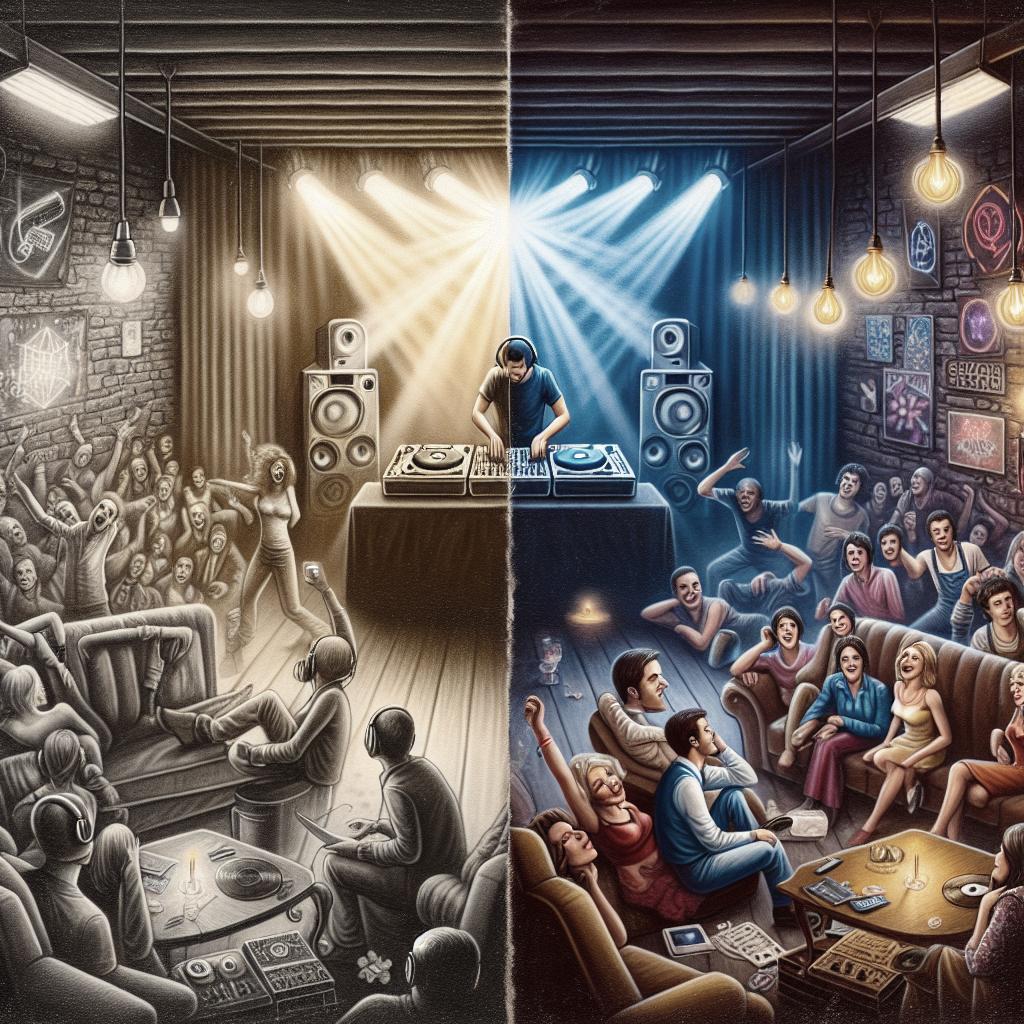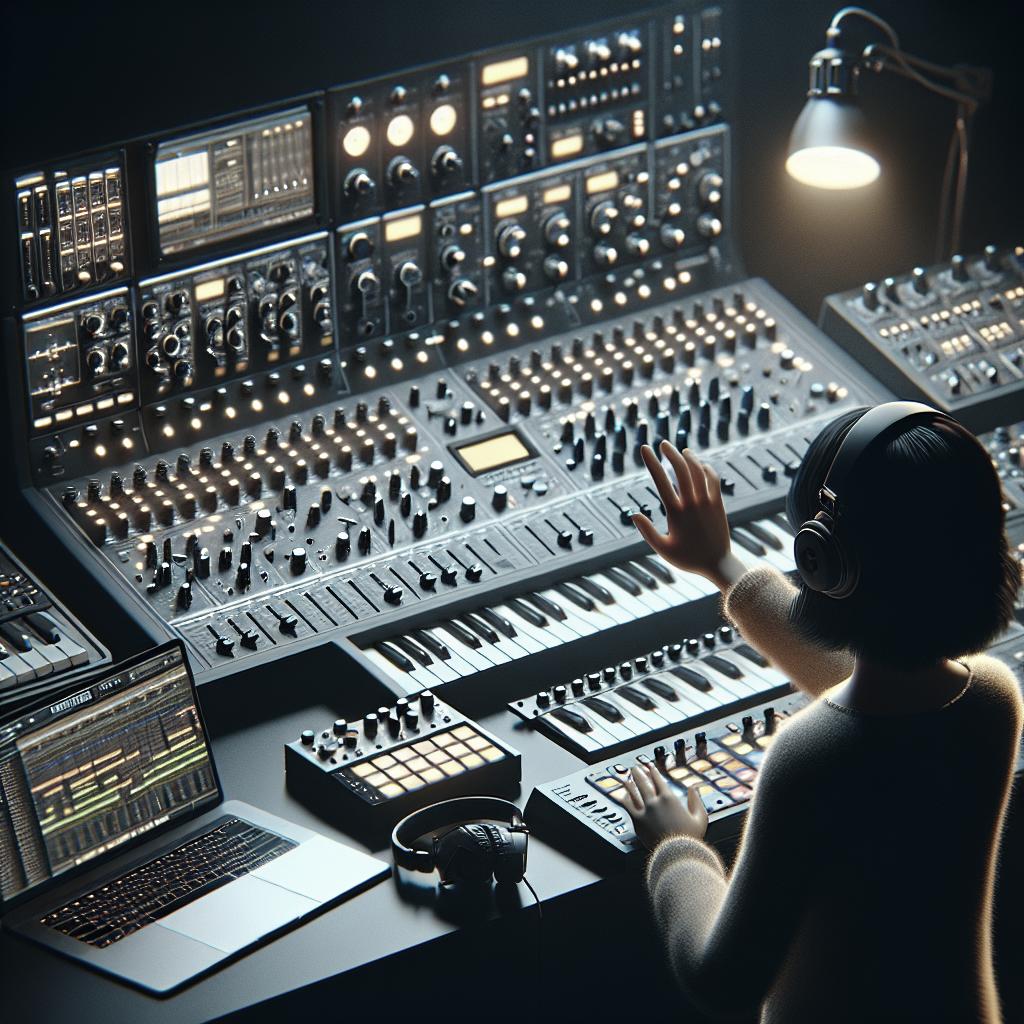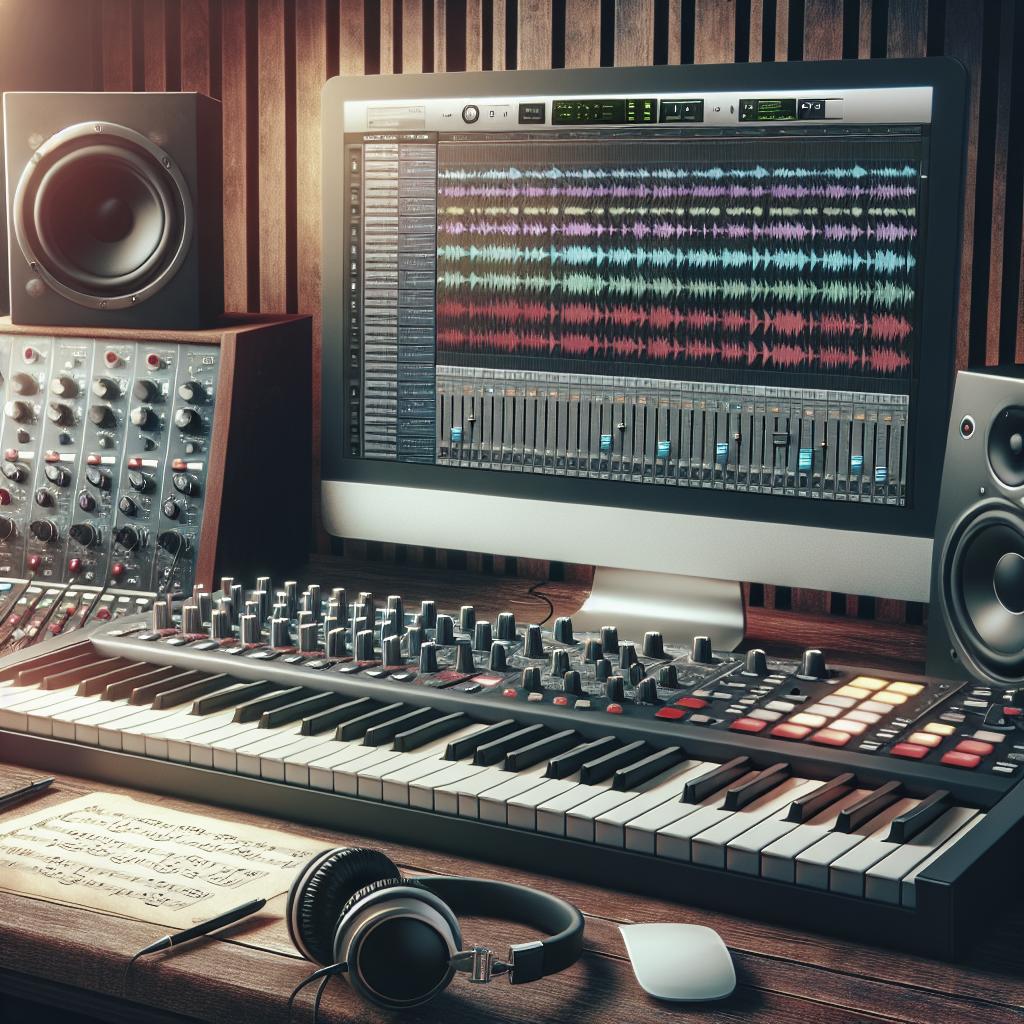<>
For music enthusiasts and dance floor fanatics, techno and house music represent two of the most prominent genres in the electronic dance music (EDM) spectrum. Both have deep roots and have significantly influenced global music culture. Although they share some common features, techno and house are distinct in style, tempo, and history. This blog post delves into the definitions, origins, and differences between techno and house music. It also explores another hybrid genre, tech house, which blends elements of both. Stay tuned to deepen your understanding of these dynamic and influential music styles.
What Is Techno Music?
Techno music, originating in Detroit during the mid-1980s, is known for its mechanical and futuristic soundscapes. Pioneers like Juan Atkins, Derrick May, and Kevin Saunderson, often referred to as the “Belleville Three,” laid the groundwork for this genre. Influenced by a mixture of electronic, funk, and futuristic elements, techno is characterized by repetitive beats and synthesized rhythms. As a genre, it focuses on minimalism and the use of technology to create a dystopian yet danceable atmosphere. The typical tempo of techno tracks ranges from 120 to 150 BPM (beats per minute). Its emphasis on rhythm over melody often results in intense, looping grooves that appeal to both underground and mainstream audiences. As the genre evolved, subgenres like minimal techno, acid techno, and hard techno emerged, each bringing unique flavors to the global electronic music scene.
What Is House Music?
House music, often dubbed as the soul of the dance floor, emerged in Chicago in the early 1980s. It draws heavily from disco, soul, and funk, using repetitive 4/4 beats and adding a more melodic, vocal-driven sound. House music pioneers like Frankie Knuckles, Larry Heard, and Marshall Jefferson helped to shape the genre, incorporating lush synths, basslines, and often soulful or gospel-tinged vocals. The tempo of house music generally lies between 118 to 135 BPM, making it slightly slower than techno. House music’s infectious grooves and uplifting vibes are designed to energize and unite dance floors. Over the years, the genre has diversified into various subgenres like deep house, acid house, and progressive house, continually reinventing itself while maintaining its core elements.
Is Techno Considered House?
Though techno and house music share some common ground, like their 4/4 time signatures and dancefloor-focused nature, they are distinct genres with different origins. House music’s roots in soulful and vocal elements contrast with techno’s minimalist and repetitive approach. Techno is generally more abstract and focused on electronic instrumentation, while house is often richer in melody and human elements. Moreover, fans and critics alike view house and techno communities as separate entities within the broader umbrella of electronic dance music. While historical and modern-day artists often blur the lines between the two genres, it’s essential to understand and appreciate their unique characteristics that contribute to the vivid palette of EDM.
What Is The Difference Between House and Techno?
One of the primary differences between house and techno lies in their foundational elements. House music often revolves around musical keys, melodies, and vocals. It aims to create an uplifting and emotionally engaging atmosphere. On the other hand, techno focuses on musical textures and rhythmic patterns, creating more of an industrial or futuristic vibe. The instrumentation and production techniques further set these genres apart. House music frequently incorporates piano riffs, soulful vocals, and organic instruments that inspire warmth and inclusivity. In contrast, techno employs synthesized sounds, drum machines, and sequencers to evoke a more mechanical and often darker feel. Ultimately, the listener’s experience distinguishes house from techno. House music often brings joy and encourages sing-along moments, while techno engages the listener with hypnotic beats and deeper, trance-like states. Whether it’s the emotive journey of house or the relentless drive of techno, each genre offers a unique dance music experience.
What Is The Difference Between Techno and Tech House?
Tech house is a subgenre that effectively fuses the mechanical and minimalist aspects of techno with the groove-oriented, melodic vibes of house music. Originating in the 1990s, tech house combines a techno-like precision with house’s accessibility and warmth. Artistes like Carl Cox, Richie Hawtin, and Mark Knight have contributed to its growth and popularity. Tempo-wise, tech house generally lies somewhere between house and techno, ranging from 120 to 135 BPM. The beats are bouncier and more fluid compared to the stark, oscillating patterns typical of techno. Unlike pure house or techno, tech house often includes subtle build-ups and gentle drops, maintaining a steady and engaging rhythm without overwhelming the listener. Production-wise, tech house borrows elements from both worlds. The crisp hi-hats and resonant basslines from techno meld seamlessly with the melodic synths and groovy basslines of house music. This fusion creates a dynamic and versatile genre that appeals to diverse audiences and fits into various sonic landscapes.
Simply Put…
Techno and house music are two sides of the same electronic music coin. Techno focuses on technological precision and mechanical rhythms, while house music brings soulful melodies and uplifting vibes to the dance floor. Despite their variations, both genres share the goal of moving bodies and uplifting spirits. Understanding each style’s nuances allows listeners and dancers to appreciate the full spectrum of electronic dance music. Whether you’re a devoted fan or a casual listener, knowing the unique characteristics of techno, house, and tech house can enrich your musical experience. These genres continue to evolve, inspiring new sounds and trends that shape the vibrancy of dance music culture.
Stay in the loop
To keep up with the latest in techno, house, and tech house, consider following influential artists, attending local events, and subscribing to music platforms that specialize in these genres. Engaging with online communities on social media and forums can also provide insights and recommendations for discovering new tracks and artists.
Other SIX AM News:
Don’t miss out on the latest updates from SIX AM. Stay informed about upcoming music festivals, artist interviews, and other exciting news in the electronic dance music scene. Our community is your go-to source for all things techno and house, bringing you closer to the music you love.
| Aspect | Techno | House Music | Tech House |
|---|---|---|---|
| Origin | Detroit, mid-1980s | Chicago, early 1980s | 1990s fusion of techno and house |
| Tempo | 120-150 BPM | 118-135 BPM | 120-135 BPM |
| Key Characteristics | Mechanical, repetitive, minimal | Melodic, soulful, vocal-driven | Fusion of techno precision and house grooves |
| Instrumentation | Synthesized sounds, drum machines | Piano riffs, soulful vocals, organic instruments | Crisp hi-hats, resonant basslines, melodic synths |


